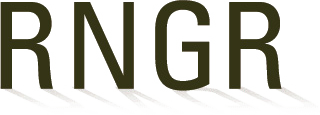
Arctostaphylos (patula)
|
jtrindle USDA NRCS - Corvallis Plant Materials Center 3415 NE Granger Ave Corvallis, Oregon 58413 (541)757-4812 http://plant-materials.nrcs.usda.gov/orpmc |
|
| Family Scientific Name: | Ericaceae | ||
|---|---|---|---|
| Family Common Name: | Heaths | ||
| Scientific Name: | Arctostaphylos patula Greene | ||
| Common Name: | greenleaf manzanita | ||
| Species Code: | ARPA6 | ||
| Ecotype: | Crater Lake National Park, 6,000 ft +/- 300 ft elevation. | ||
| General Distribution: | Washington to Arizona, Colorado, Utah, Montana. At Crater Lake, occurs in high, rocky, semi- open areas and at the edge of drier, well-drained wooded areas | ||
| Propagation Goal: | plants | ||
| Propagation Method: | vegetative | ||
| ProductType: | Container (plug) | ||
| Stock Type: | 6 | ||
| Time To Grow: | 9 Months | ||
| Target Specifications: | Well developed, branching crown; healthy, well-branched roots reaching bottom of containers | ||
| Propagule Collection: | Dormant one-year-old wood cuttings were collected in November just around first snowfall and shipped to the PMC in coolers, packed in moist peat and snow. Cuttings should be collected as late into the fall / early winter as possible to collect mature, dormant 1-year old wood. | ||
| Propagule Processing: | Cuttings were stored in moist peat in cooler at 3 to 5 C until January. It is important that the peat moss not be so moist as to allow free surface moisture to condense on the leaves or stems while in storage, as they are suceptible to rotting and mildew. | ||
| Pre-Planting Treatments: | Prior to sticking the cuttings they were dipped in a 5% sodium hypochlorite solution for 10 seconds, and fresh basal cuts were made just prior to applying rooting hormone. Cuttings were dipped into Hormex #8 ((0.8% indolbutyric acid) rooting compound . | ||
| Growing Area Preparation/ Annual Practices for Perennial Crops: |
Cuttings were placed into 5" deep mesh - bottomed propagation boxes with horticultural vermiculite, placed into a "minimally heated" greenhouse (ie no supplemental heat provided during the day; heating only to about 50 F at night) greenhouse on bottom-heat mats set for 68 to 70 F. Very light misting was provided manually as needed to keep the perlite moderately moist; otherwise no overhead misting was used. Rooting develops very slowly and it is important not disturb the cuttings during this time. | ||
| Establishment Phase: | Cuttings were left undisturbed for 4 months in the propagation beds. In April, the rooted cuttings were carefully lifted from the rooting medium and transplanted into 6" square pots in Sunshine "Aggregate -Plus" soil-less potting medium. Plants were then returned to the poly greenhouse for another month, then moved outdoors to a shadehouse (40% shade) in May afterheavy winter rains had passed. | ||
| Length of Establishment Phase: | 4 to 5 months | ||
| Active Growth Phase: | Plant were held outdoors in the shadehouse and watered by means of a drip irrigation system usually once or twice a week. In late May through July, plants were fertilized every other week with a half-strength Peters' 20-20-20 solution. These plants had few insect or disease problems; leaf spotting was only a problem if the leaves or soil surface were kept wet. | ||
| Length of Active Growth Phase: | May through July | ||
| Hardening Phase: | Fertilization was ended after July, and intervals between waterings gradually lengthened to encourage vegetative maturity. In late August shadecloth was removed to allow plants to harden under full sun . | ||
| Length of Hardening Phase: | August to September. | ||
| Harvesting, Storage and Shipping: | Plants were shipped in their containers to Crater Lake NP in lat August via refrigerated van to a holding facility at the park where they were hardened off until ready to outplant in late September. | ||
| Length of Storage: | none stored at PMC | ||
| Other Comments: | Special thanks are owed to Ray Prag of Forestfarm Nursery, Williams, OR (www.forestfarms.com) for his advice regarding how to collect and root cuttings | ||
| References: | Prag, Ray 1995 personal communication (Forestfarm Nursery, Williams, OR) | ||
Citation:
Flessner, Theresa R; Trindle, Joan D.C.. 2003. Propagation protocol for production of Container (plug) Arctostaphylos patula Greene plants 6; USDA NRCS - Corvallis Plant Materials Center Corvallis, Oregon. In: Native Plant Network. URL: https://NativePlantNetwork.org (accessed 2025/10/16). US Department of Agriculture, Forest Service, National Center for Reforestation, Nurseries, and Genetic Resources.



